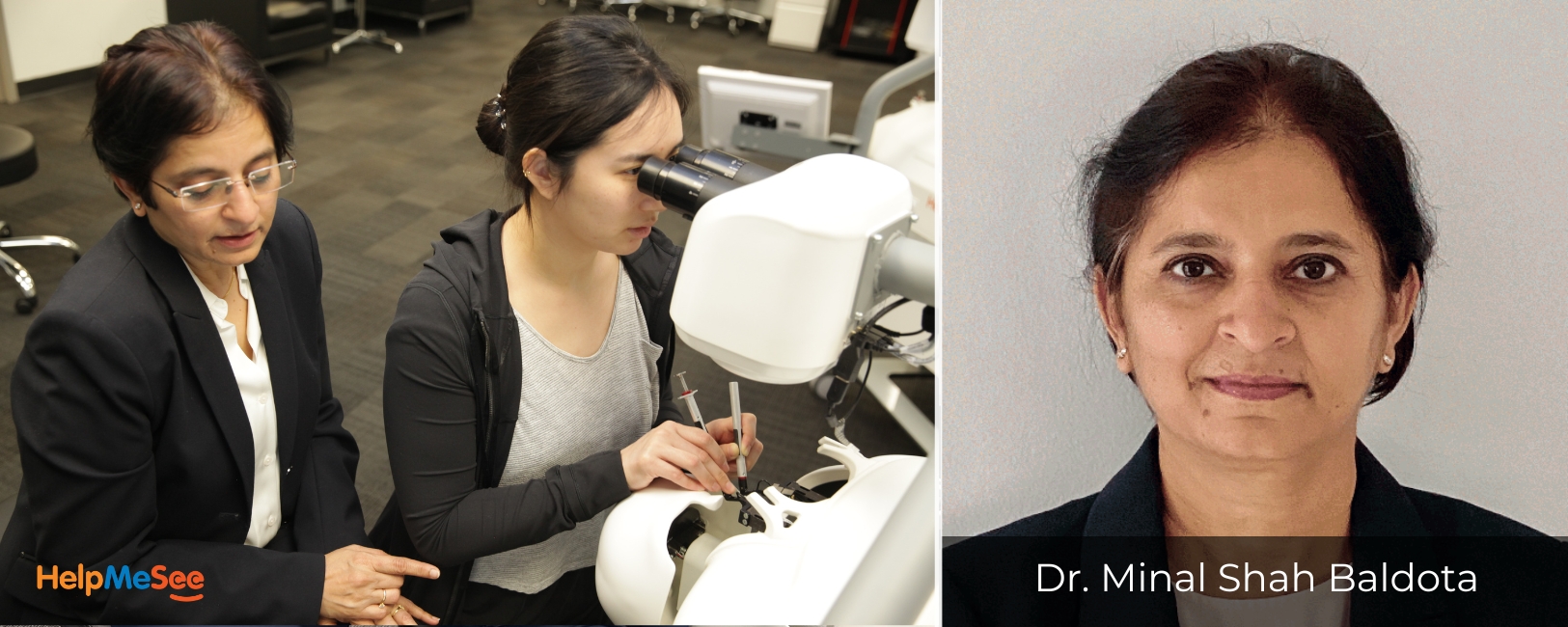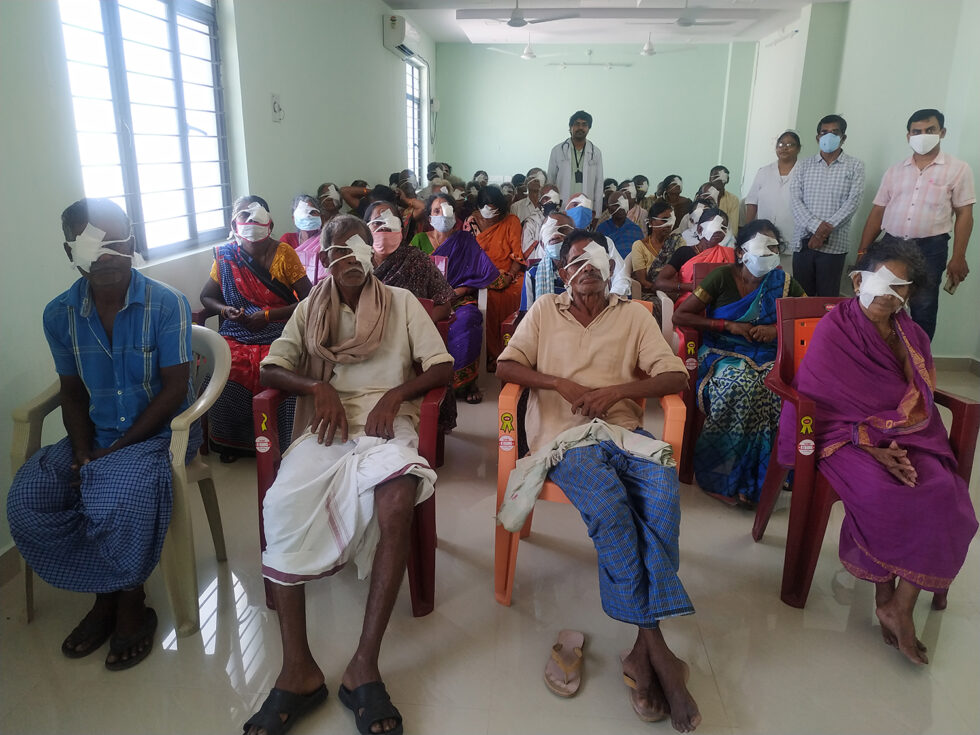Individuals with cataract-related vision loss or blindness may mistakenly believe that their condition is permanent or that they do not have access. The truth is, however, cataract surgery can restore sight in the cataract blind, and it is one of the safest and most effective ocular procedures performed today.
Alongside HelpMeSee, a global nonprofit organization, Dr. Minal Shah Baldota is working to train individuals by leading simulation-based training for surgeons in the United States and abroad. HelpMeSee hopes to dispel the misconception that cataract vision loss is permanent through comprehensive awareness campaigns targeting the general public. Approximately 100 million individuals worldwide are living with avoidable blindness or significant visual impairment due to cataracts. (1)
“Patients with cataract feel that they have some blinding disease and that they are forever burdened with not being able to see,” Dr. Minal said. “That’s the feedback I get from almost every ophthalmologist I meet.”

But grassroots efforts alone is not enough to dispel myths or clear the backlog of patients living with vision impairment from cataract. In fact, between the aging world population and increasing life expectancy, the prevalence of cataracts is projected to increase by 78% in the next 26 years. (2) Additionally, there is a shortage of clinicians skilled in cataract surgery, especially in low and middle income countries, (3) threatening to widen the gap of those in need of sight-restoring surgery.
There is an urgent need for more trained cataract surgeons, and increasing cataract surgery access is mission critical. As the HelpMeSee Chief Instructor of the Americas, Dr. Minal has met hundreds of aspiring cataract surgeons and helped many develop the surgical and decision-making skills required to perform cataract surgery techniques including Phacoemulsification and Manual Small Incision Cataract Surgery (MSICS). She and other HelpMeSee instructors use the HelpMeSee Eye Surgery Simulator, a virtual-reality–based simulation system offering high-fidelity spatial, visual, and tactile realism, to coach learners through surgery in a risk-free environment. This technology has demonstrated efficacy in preparing cataract specialists for real-life surgical scenarios. (4)

Dr. Minal says her many years of experience built a strong desire to give back to society, and HelpMeSee is the perfect platform to educate future cataract surgeons. “I believe [it] is the best way to share my experience to those still learning the ropes of this field,” she said, adding that the role of instructor is the perfect combination of passion, mission, profession, and vocation—a philosophy known as Ikigai.
Having accumulated the most hours on the HelpMeSee Eye Surgery Simulator, Dr. Minal has worked with many training programs in the United States. According to her, many had access to other simulation devices but switched to HelpMeSee. One advantage is it’s the only instructor-led course, ensuring that trainees receive personalized guidance and support throughout their learning journey. Other advantages are also easily noticeable. “The HelpMeSee Simulator has visual and most importantly [haptic feedback] that assists the surgeon to understand and feel where they are [inside the lifelike virtual eye] and which tissue is contacted,” she said, adding this level of realism is crucial for effective training, and it better prepares surgeons for real-life scenarios.

Feedback from instructors helps trainees learn the nuances of cataract surgery with multiple techniques. For instance, knowing how to transition from a sutureless Phacoemulsification technique to MSICS in a complex case or placing sutures in cases of wound complications can mean the difference between a positive outcome and a complicated postoperative course. In surgery, preparedness for the unpredictable is vital, Dr. Minal said. “Understanding how to deal with complications before they actually happen keeps the surgeon calm and prepared,” she finished.
HelpMeSee offers four simulation-based training courses: MSICS, Phacoemulsification, Suturing, and Complications Management. In addition to simulation-based surgery instruction, each course also consists of self study, classroom sessions, and hands-on exercises. Dr. Minal stressed the importance of completing as many courses as possible. “During surgery, one must be well prepared for the unpredictable,” she said. “Better to be armed with more methods if it comes to conversion.”
To learn more about HelpMeSee, visit www.helpmesee.org.
